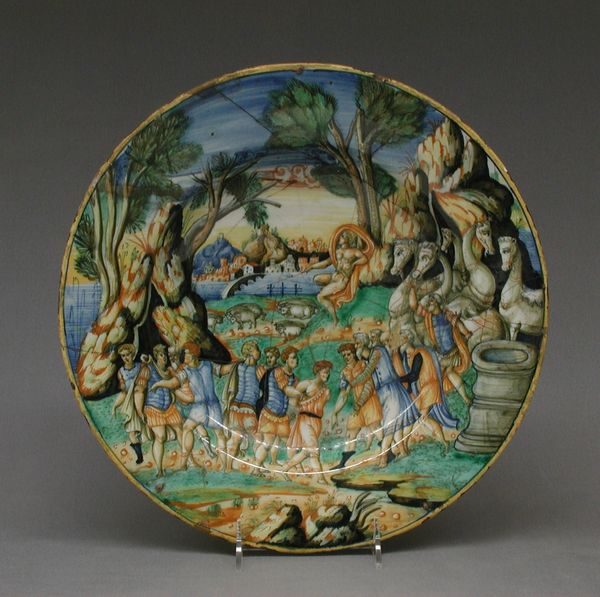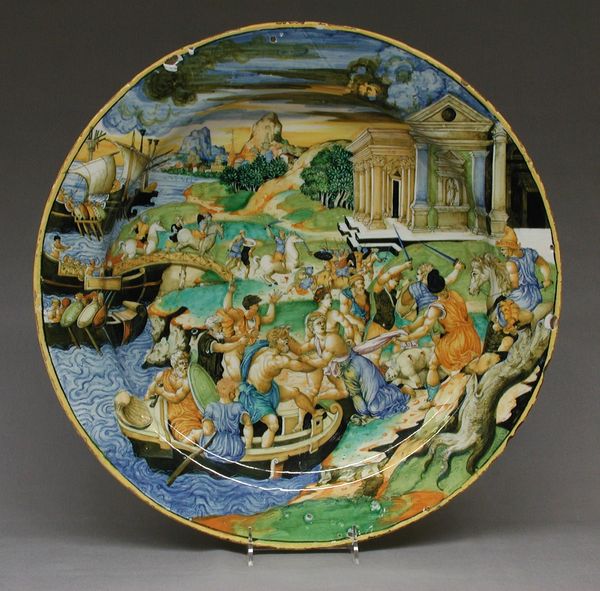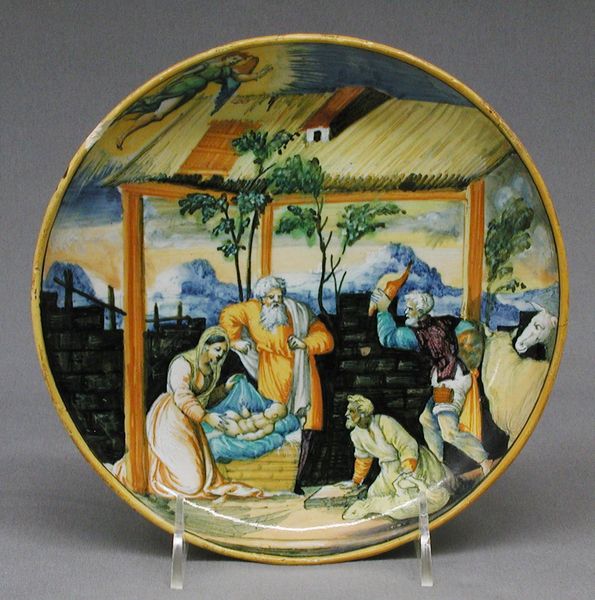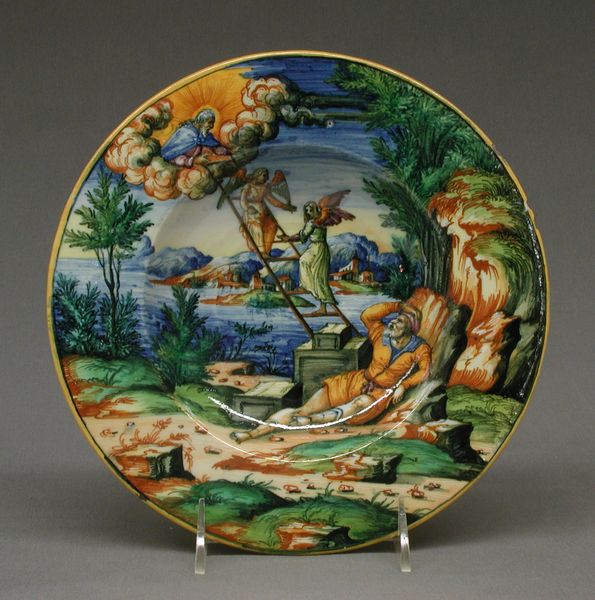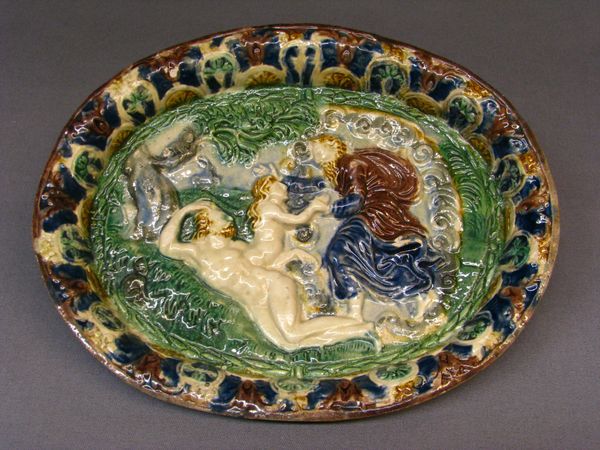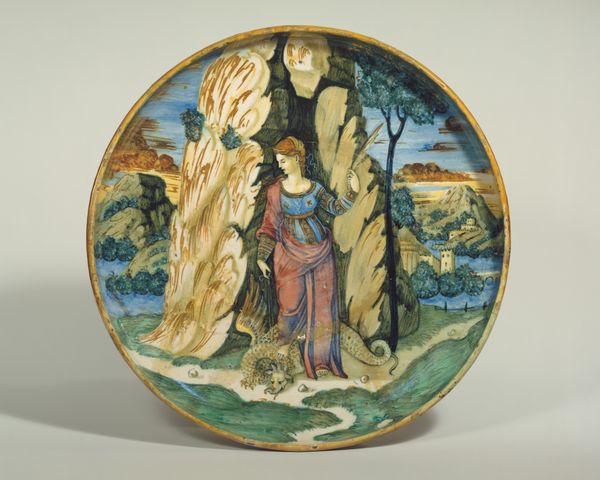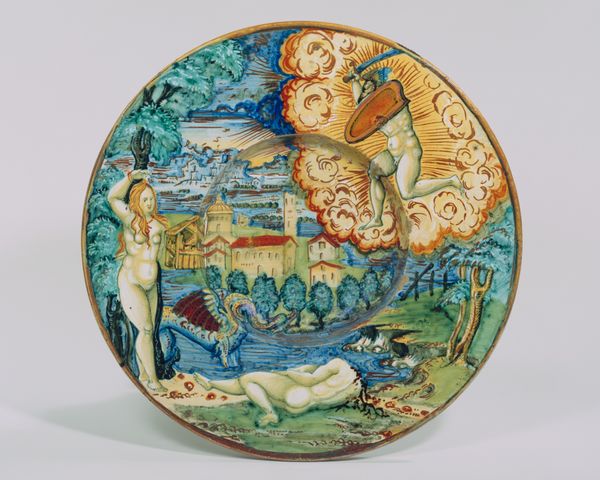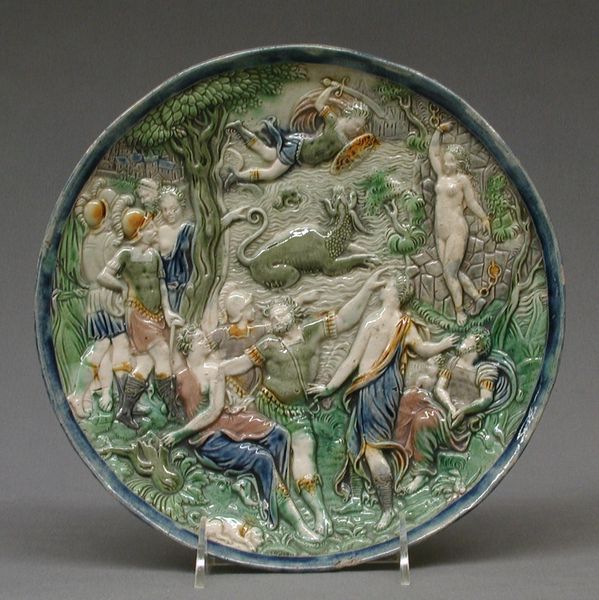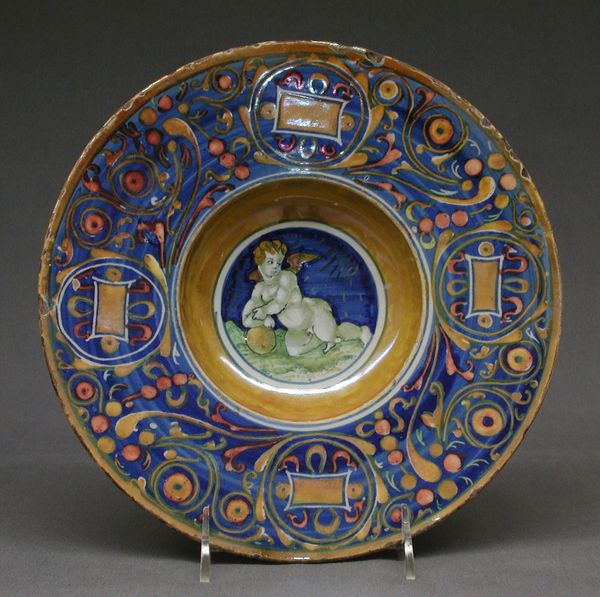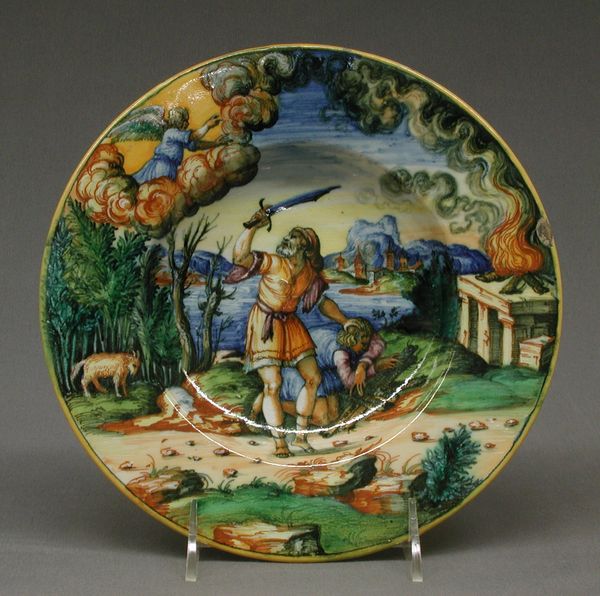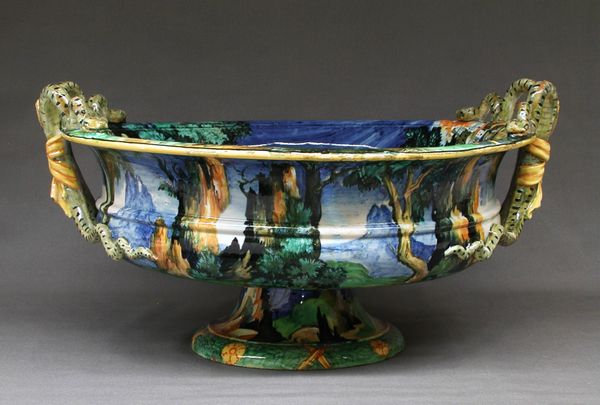
ceramic, sculpture
#
landscape
#
ceramic
#
figuration
#
sculpture
#
history-painting
#
decorative-art
#
italian-renaissance
#
nude
Dimensions: Overall (confirmed): 2 1/2 × 11 1/8 in. (6.4 × 28.3 cm)
Copyright: Public Domain
Editor: This is a *Tazza* made by Maestro Giorgio Andreoli sometime between 1525 and 1545. It’s a ceramic piece, currently held at The Met. I find the composition a bit overwhelming, like a tapestry of figures, fire, and landscapes all competing for attention on this plate. What are your initial observations? Curator: Indeed. If we strip away the representational aspect and consider it purely as an arrangement of forms and colors, we see a complex interplay of circular shapes mirrored in the plate itself, the fire's swirling smoke, and even the architectural details of the altar. Notice how the artist has used the verticality of the trees on the left to offset the horizontal landscape in the background, creating a tension that keeps the eye moving. Editor: So, you're saying it’s more about how it's put together, the lines and forms, than what it depicts? I suppose the way the figures are positioned around the central fire creates a strong focal point. Curator: Precisely. And observe the color palette – the fiery oranges and yellows against the cool blues and greens. It’s not merely descriptive, but actively constructing a dynamic visual experience. How do you see the artist playing with the boundaries of the plate form? Editor: Now that you mention it, the scene spills over the edges, almost like it's too big to be contained. That tension creates movement and a sense of boundlessness. It definitely pushes against the limits of the ceramic support, refusing to be confined by its shape. Curator: An astute observation! It seems Andreoli is challenging the static nature of the medium, using the depicted scene to undermine the object's physical limitations. Editor: I’ll never look at a plate the same way again. It's fascinating how analyzing the visual elements unlocks a whole new level of understanding. Curator: And I, in turn, see the virtue in your recognition of narrative. Finding this balance informs our appreciation of Renaissance artistry, don’t you agree?
Comments
No comments
Be the first to comment and join the conversation on the ultimate creative platform.
